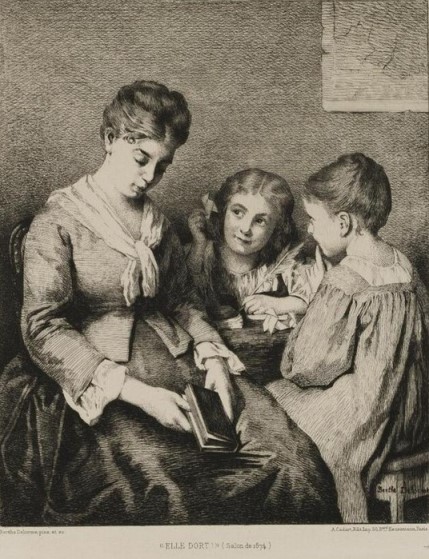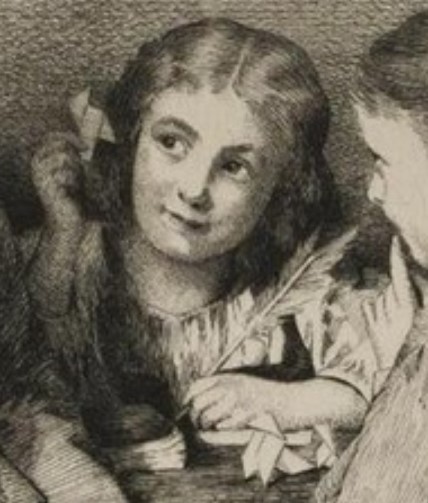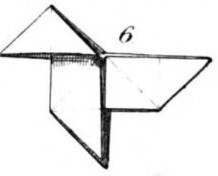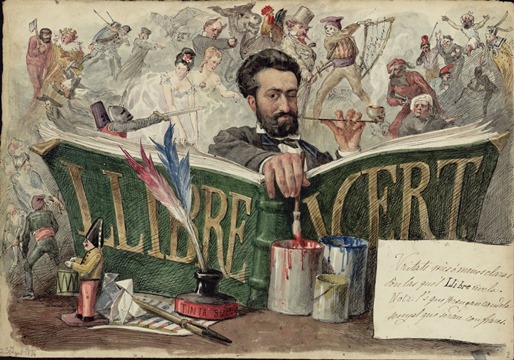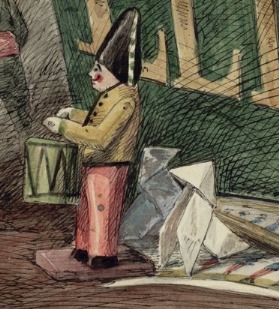| The Public Paperfolding History Project
Last updated 2/11/2025 x |
|||||||
| The Cocotte / Pajarita in Western Europe 1850 to 1874 | |||||||
This page isbeing used to collect information about the history of the paperfolding design known as the Cocotte (in French) and the Pajarita (in Spanish) during the years 1850 to 1874. Please contact me if you know any of the information on this page is incorrect or if you have any other important information that should be added. Thank you. There are separate pages about the history of the Cocotte / Pajarita: An Introduction giving general information about this design can be found on the page relating to the years 1800 to 1849. ********** Chronology 1850 This painting by Pierre Lacaze (1816-1884), which is known as 'The Young Student', is held in the Victoria and Albert Museum, can be dated to circa 1840 - 1850.
********** This print by Theodore Valerio, titled 'Le Chateau de Cartes', and said to date from 1850, includes two tiny Cocottes in the lower left hand corner.
********** 1853 This sketch from 1853 by Felix Nadar is ttled 'Polydore Millaud menant un attelage de cocottes en papier' (Polydore Millaud leads a team of paper cocottes).
********** 1855 This painting by P. Petrov, held in the Galeria Tretyakov in Moscow, which shows a child with a book, ball and a Cocotte / Pajarita can be dated to around 1855. Information from Jose Tomas Buitrago.
********** 'Les Paysans' by Honore de Balzac was published posthumously in 1855, having been brought to completion by his wife. It contains the following passage mentioning cocottes and paper boats:
********** According to www.vetustideces.blogspot.com/2017/11/caricaturarte-29-el-salon-de-1855-8.html this engraving is by the French illustrator Bertall (Charles Albert d'Arnoux) and is a parody of the 1854 painting 'A retour de bal masqué; épisode du carnival of 1854 ' by Charles-François Marchal, an engraving from which is also shown below.
However, this engraving was reviewed in Le Journal de Rire' of 1st December 1855, where it is ascribed to M Marchal. The text says 'Les Cocottes, par M Marchal: Quelques cocottes en papier blanc rencontrent un jeu de cartes sorti de chez le marchand de vin. Voilà certes une composition bien simple, et dont l'idée serait venue a tout le monde. L'idre particulière à M. Marchal consiste a donner a cette scène du sentiment et de la couleur, ce a quoi il a fort bien réussi.' In English, roughly, 'Les Cocottes, by M Marchal: A few cocottes in white paper meet a deck of cards from the wine merchant. This is certainly a very simple composition, the idea of which would have occurred to everyone. The special idea of M. Marchal consists in giving this scene feeling and color, in which he succeeded very well.'
********** 1857 This illustration by Bertall (1820-1882) appeared in 'Children s Week' of June 20, 1857.
********** 1859 The list of paper folding designs in the 'Manuel Pratique de Jardins D'Enfants de Friedrich Froebel, which was compiled by J F Jacobs and published in Brussells and Paris in 1859, includes a 'L'oiseau'. From its position in the list it can be inferred that this is the Cocotte design. ********** 1860 The 1960 edition of 'Anales de Primera Ensenanza. Periodico de las escuelas y de los maestros' (Annals of Primary Education: Periodical for Schools and Teachers), a journal published in Madrid, contains an article on 'Plegado', the opening paragraph of which says, roughly translated: 'The square of paper that Froebel gives the child, which is nothing less than the one used to make a bird (una pajara). This is presumably a reference to the Cocotte / Pajarita. ********* This print by Charles Bargue after Auguste Toulmouche shows a governess (probably) building a Card Castle while the children look on, the older one somewhat bored. It is in the collection of the British museum and can be dated to 1860. There are also a number of folded Cocottes on the table.
********** 1861 There is mention of a design titled 'ein Vogel' (a bird) in a list of 'Lebensformen' (Forms of Life) in 'Das Paradies der Kindheit' (The Paradise of Childhood) by Lina Morgenstern, which was published in Leipzig in 1861. There is no illustration of the design but it is probably the Cocotte / Pajarita.. ********** 1863 'De Kleine Papierwerkers 1: Wat men van een stukje papier al maken kan: Het vouwen' (The Small Paperwork 1: What one can make from a piece of paper: Folding) by Elise Van Calcar, which was published by K H Schadd in Amsterdam in 1863, contains a drawing of 'De sprinkhaan' (the grasshopper).
In this dialogue, from page 9, Aunt Mina says, roughly, 'Hey brother, can you still make the pipecap that old cousin Koosje taught us as children?', to which he replies, '... I still see her sitting there that evening when she taught us to make a grasshopper (ie the Cocotte) out of paper. I left all my toys for that thing ...'.
********** 1864 'Les Cocottes' by Paul Mahalin, was published in Paris in 1864 by G Kugelman. It is said to contain observations of the daily habits of Parisian prostitutes and a discussion of their role in society. The frontispiece pictures two different kinds of cocotte.
********** 1866 This cartoon by Paul Hadol of the French playwright Emile Augier, which references his play 'La Contagion', appeared in Le Charivari of 9th Apriul 1866. Information from Juan Gimeno.
********** 1867 The French satirical magazine 'La Lune' of 24th March 1867 contained two cartoons featuring Cocottes. Information from Jaume Coll Guerrero.
********** This cartoon by the illustrator Paul Hadol, titled 'les cocottes expulsées des cafés' is in the collection of Paris Musees and is dated to between 1860 and 1870.
********** 1868 During 1868 Cocottes appeared on three of the front covers of the French satirical magazine 'L'Eclipse'. 8th February 1868
**** 26th June 1868
***** 15th November 1868
********** There is mention of 'einen Raben' (a raven) in a list of paperfolds that are said to have existed before Froebel's time in 'Der Kindergarten in seinen Wesen dargestellt' by August Koehler, which was published by Hermann Bohlau in Weimer in 1868 ********** 1869 A design called 'Ein Vogel', which is not illustrated, but which from the context is most probably the Cocotte / Pajarita, appears in 'Der Kindergarten' by Hermann Goldammer, which was published by Habel in Berlin in 1869. ********** 'Paradise of Childhood' by Edward Wiebe, which was published by Milton, Bradley and Company in Springfield, Massachusetts in 1869, and is effectively a translation of Goldammer's 'Der Kindergarten', similarly includes 'a bird' in its list of Forms of Life. ********** M. Hurluberlu et ses déplorables aventures' par Bertall, which was published by Librairie de L Hachette et Cie in Paris in 1869, contains several mentions of, and illustrations of cocottes. Information from Juan Gimeno.
********** 1870 A Cocotte is depicted in the painting 'Les Rieuses' (The Merrymakers) by Carolus Duran of Paris, which is in the collection of the Detroit Institute of Arts and can be dated to 1870.
A Cocotte is also depicted in a second painting by the same painter from the same year, this one entitled 'Enfant a L'Oiseau' (Child with Bird).
********** The French satirical magazine 'L'Eclipse' also featured a Cocotte on its cover on 10th April 1870.
********** The pornographic novel 'Souvenirs d’une cocodette', supposedly a memoir by the main character, Aimee, but in fact by Ernest Feydeau, and first published in Paris in 1870 by Philadelphie, contains a frontispiece showing a Cocotte covering, or perhaps censoring, the nakedness of the cocodette of the title. The attribution 'par G Flaubert' is a jokey reference to Gustave Flaubert's opinion that the book was 'tellement lubrique et indécent qu’aucun éditeur n’a consenti à le prendre' (so lecherous and indecent that no publisher would agree to take it). Flaubert and Feydeau were close friends. Information from Michel Grand. ********** This caricature of Napoleon III by Louis Jaugey appears in the first of six volumes of illustrated plates entitled 'Collection de caricatures et de charges pour servir à l’histoire de la guerre et de la revolution de 1870-1871' held at Cambridge University Library and in a similar collection, of nine volumes in this case, held at Heidelburg University. It shows 'Napoléon III as a proud peacock, wearing imperial insignia and the chain of the chivalric order of the Golden Fleece. Across his chest is a red sash bearing the date 2 December 1852, when Louis-Napoléon Bonaparte, then President of the Second Republic, became Emperor Napoléon III after a coup d’état. Although he has piles of bags overflowing with gold and silver coins labelled “war budget” and “taxes”, he has nothing to show but a magnificent appearance and in lieu of an army, a group of three paper cranes (sic) in the French national tricolour blue, white and red.' 'The daisy on the first of the paper cranes is an allusion to the emperor’s mistress, Marguerite Bellanger.' It does seem to me, however, that misidentifying the cocottes as 'cranes' means that this analysis is likely to be missing something important. For more information see https://europeancollections.wordpress.com/2019/03/11/caricatures-of-the-franco-prussian-war-and-the-paris-commune-1870-71/
Several other caricatures in the same collections also feature Cocottes:
********** 1871 A Cocotte was pictured in the background on the cover of the French satirical magazine 'Le Grelot' of 7th May 1871.
********** 1872 The cover of the French satirical magazine 'Le Sifflet' featured cartoons including Cocottes on both 8th and 29th September 1872.
********** 'Histoire de France Tintammaresque', by Touchatout, which was published by 'L'Eclipse' in Paris in 1872 contains the words 'le roi Thierry s'occupait dans son palais a faire des cocottes ...' (King Thierry was busy in his palace making cocottes ...) and an illustration to accompany the statement.
********** 1873 There is reference to 'Le coq' in a list of designs in 'Exercices et Travaux pour les Enfants Selon la Méthode et les Procédés de Pestalozzi et de Froebel' by Fanny and Charles Delon, which was published by Librairie Hachette in Paris in 1873. Unfortunately there is no illustration to confirm the identification of the design. ********** The design does, however, appear, as 'Rabe (crow)' in 'Die Praxis Des Kindergartens' by August Koehler, which was published by Herman Bohlau in Weimar in 1873.
********** This caricature featuring pajaritas appeared in 1873 in the satirical magazine 'La Flaca', which was published in Barcelona.
********** This cartoon by Andre Grevin entitled 'L'education d'Ernestine' was published in Le Charivari of 7th July 1873.
********** 1874 Three Cocottes (one of which is misdrawn) feature in this print from an etching titled 'Elle dort' by Bertha Delorme (1846-1916) which was exhibited at the Paris Salon in 1874. Information from Michel Grand.
********** The design is pictured, as 'Eine Vogel' (A Bird) in the revised version of 'Der Kindergarten' by Hermann Goldammer which was published by Carl Babel in Berlin in 1874.
There is also a separate mention of an otherwise unidentified design called 'Die Krahe' (the crow) in this book. ********** Pajaritas feature on the cover of several issues of Apeles Mestres' periodical 'Llibre Vert', which was published in Barcelona. Information from Juan Gimeno. From July 1874
********** |
|||||||
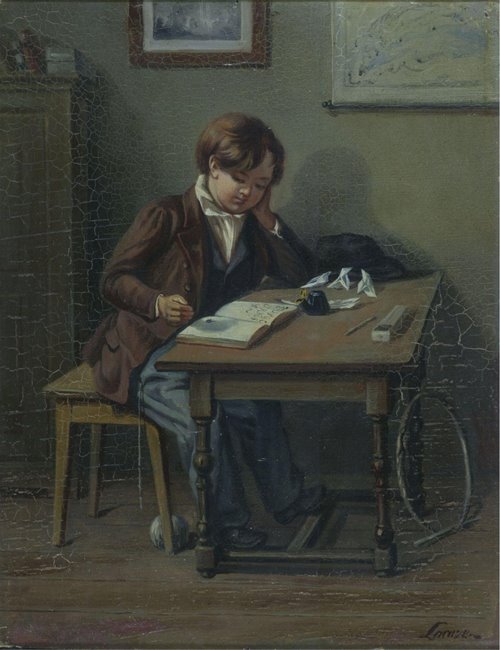
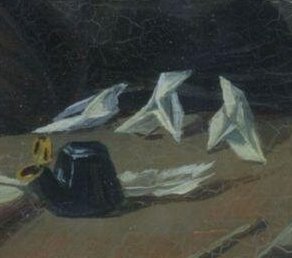
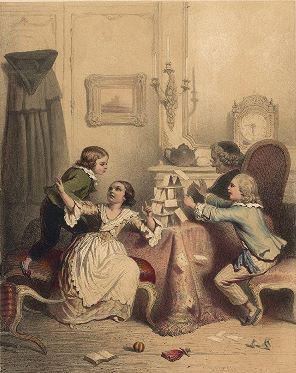
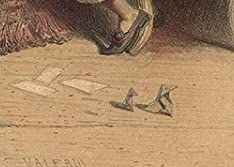
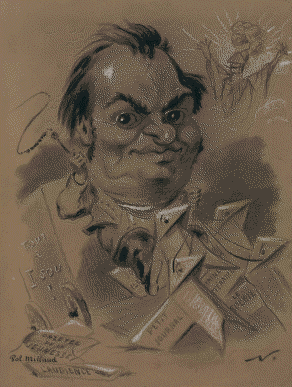
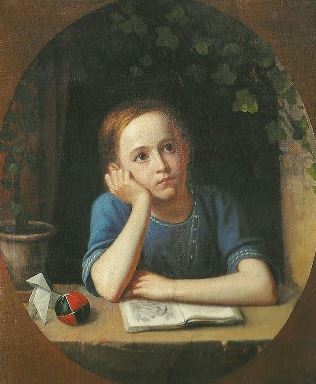

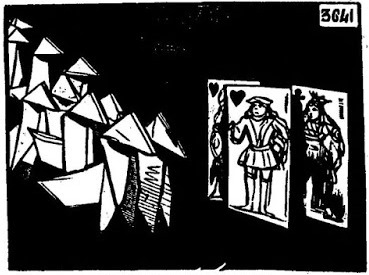
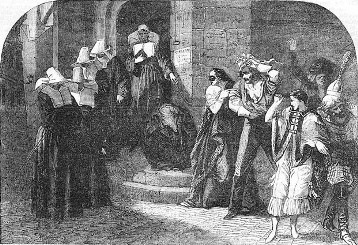
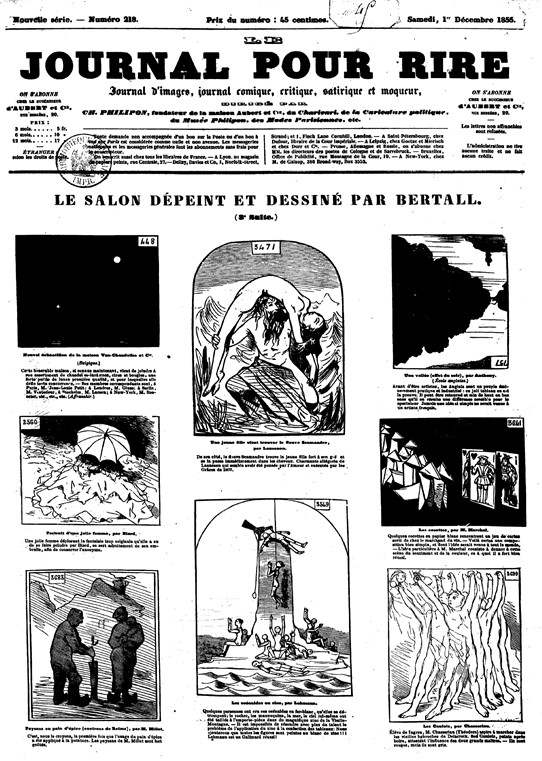
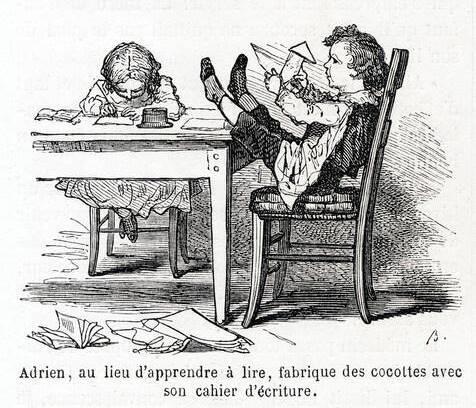
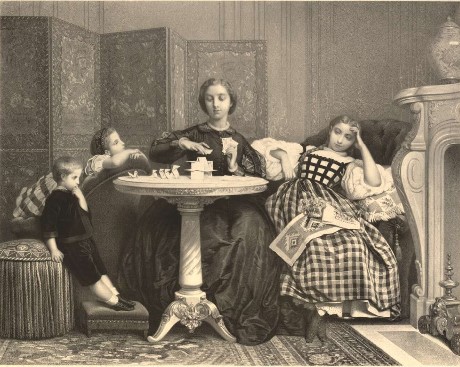
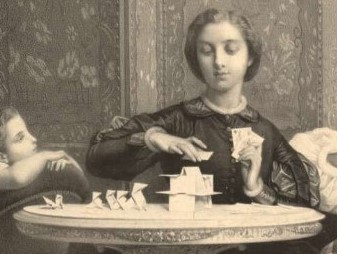
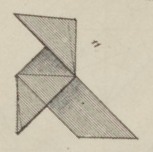
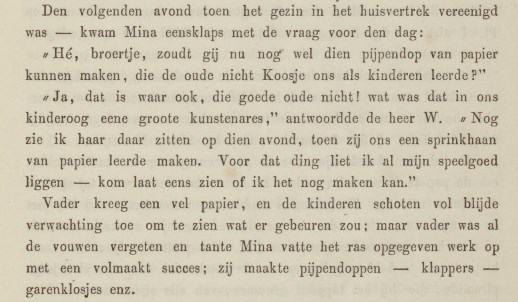
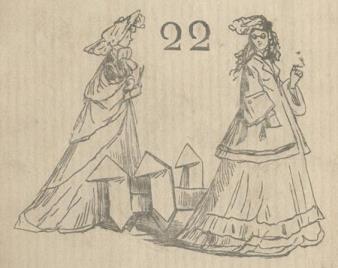
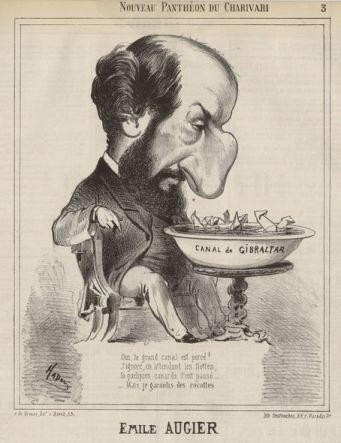
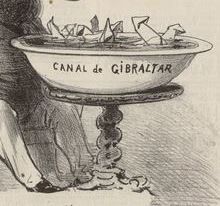
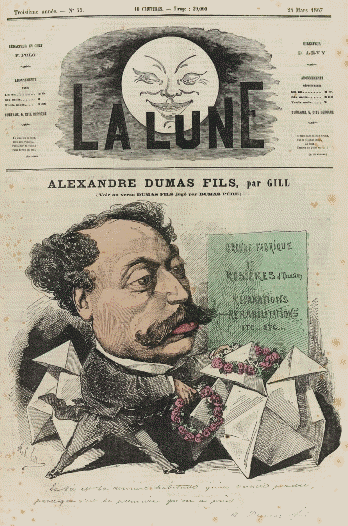
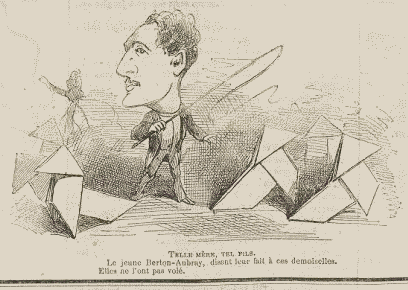
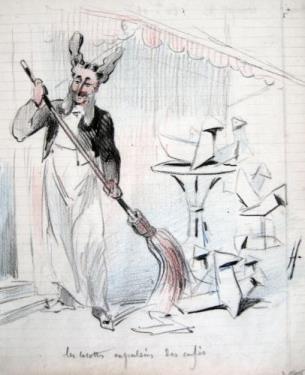
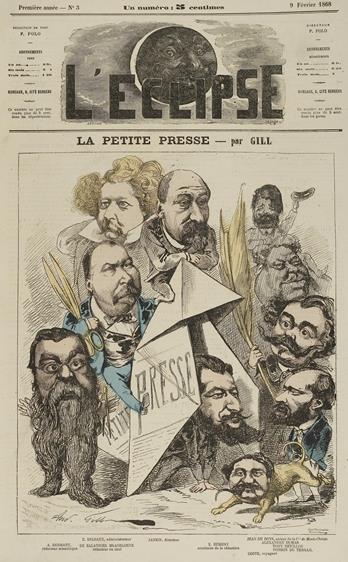
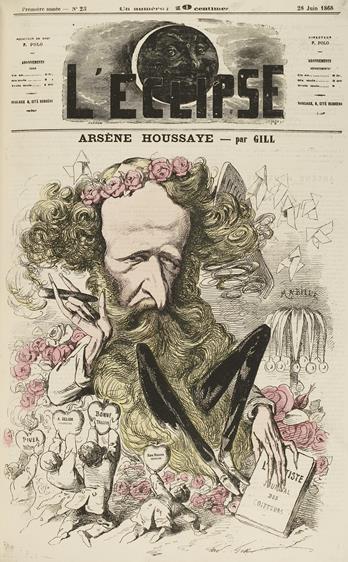
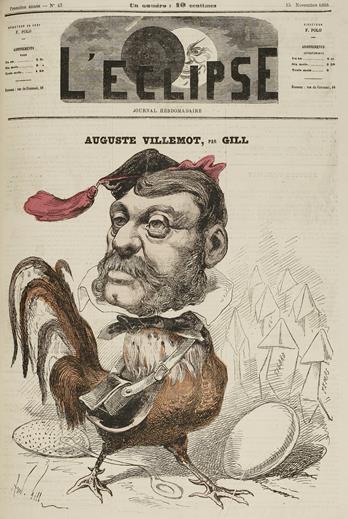
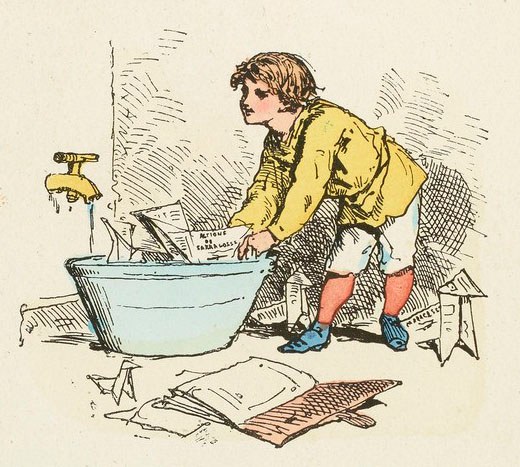
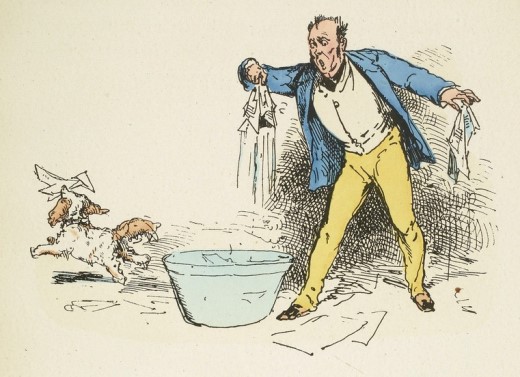
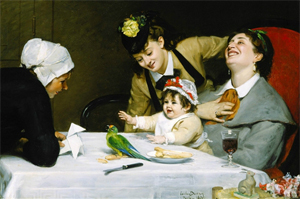
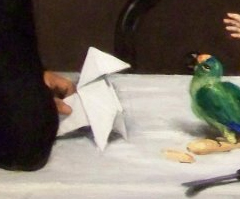
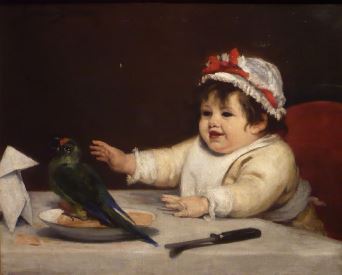
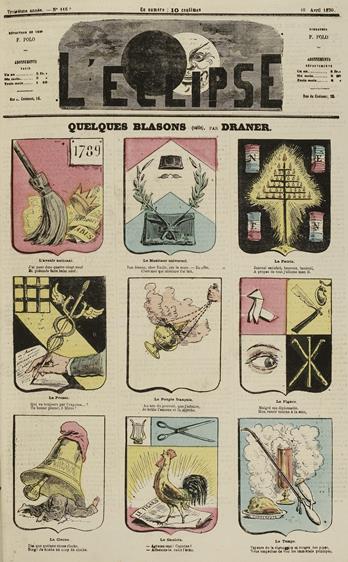
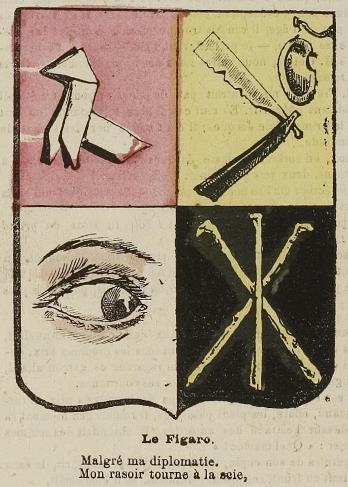
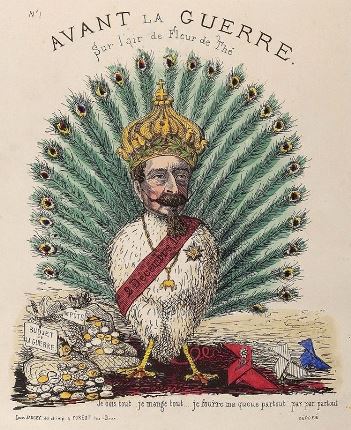
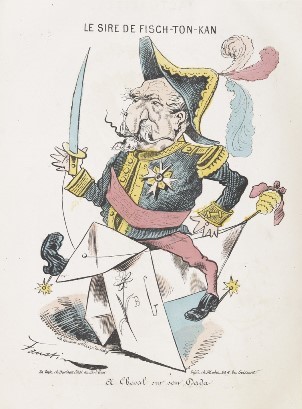
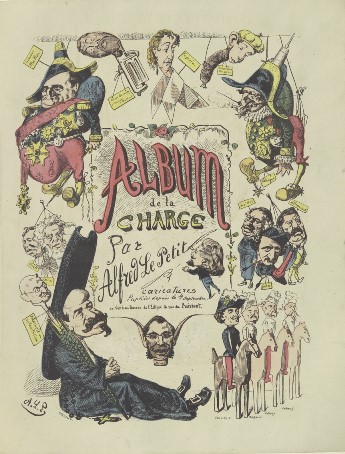
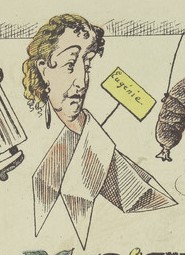
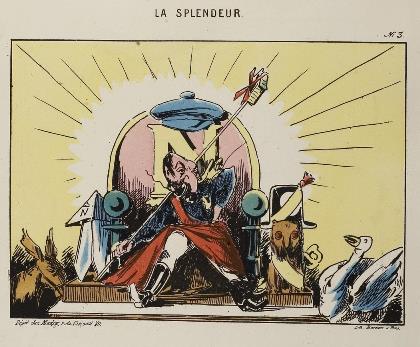
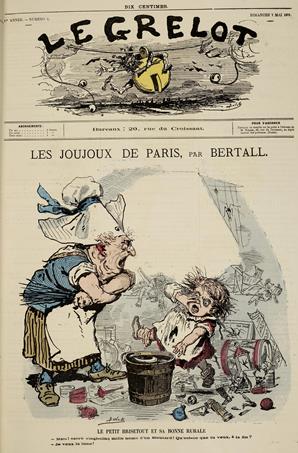
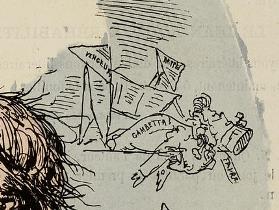
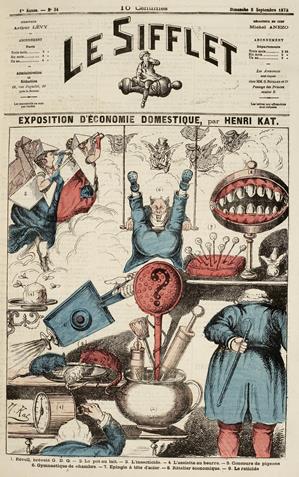
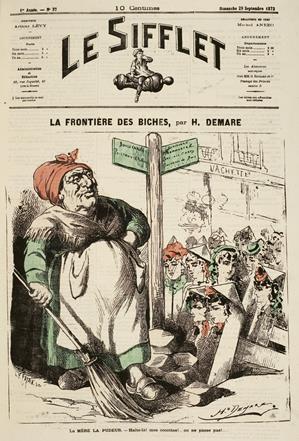


.jpg)
%20b.jpg)

